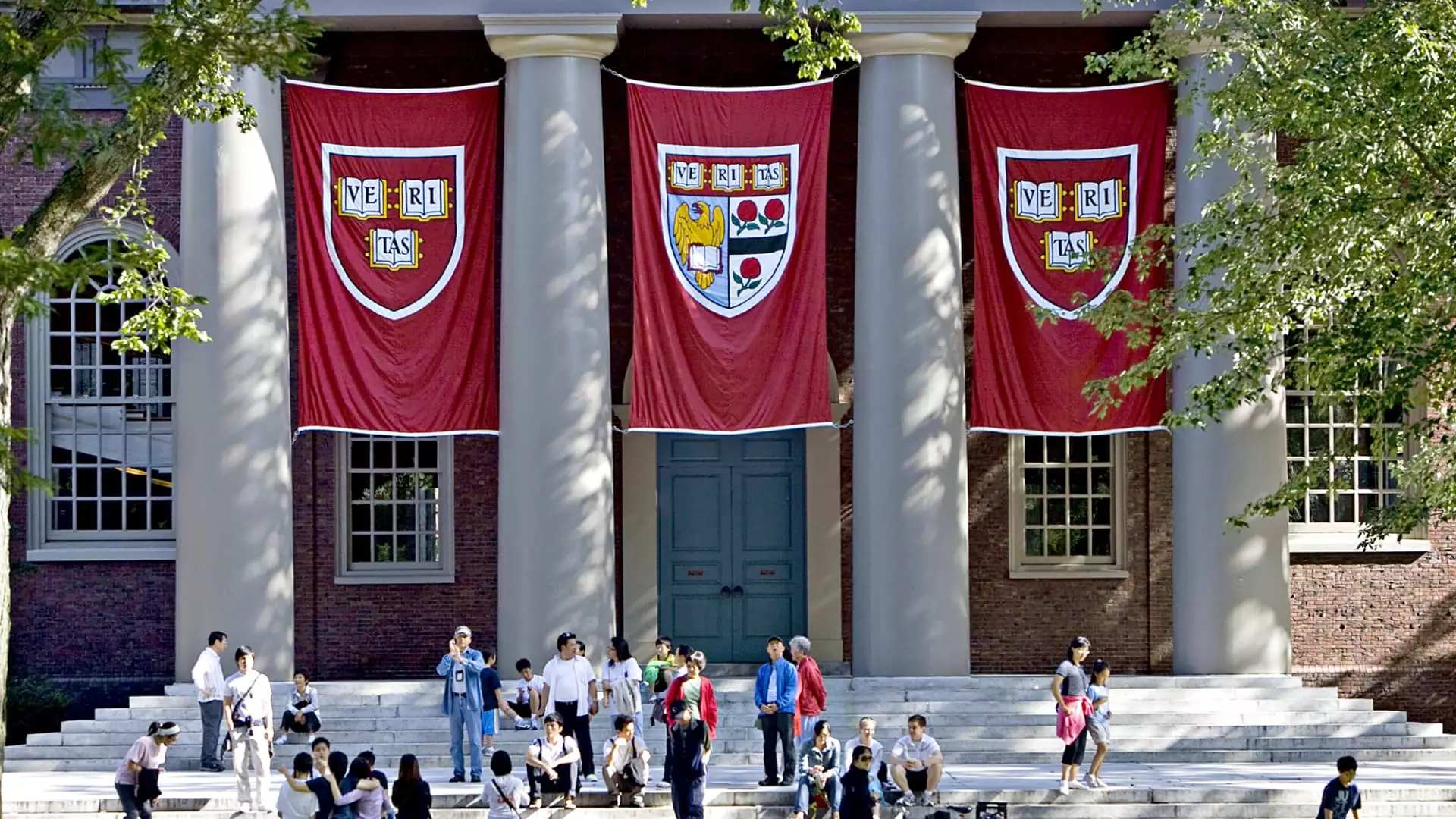Though well-intentioned, Harvard University’s recent decision to provide free tuition for undergraduates from families earning $200,000 or less reveals a deeper, systemic problem in higher education: the facade of accessibility in elite institutions. While the announcement seems laudable at first glance, it stops short of addressing the overarching issues plaguing the education landscape. The initiative only applies to a narrow band of income, effectively reinforcing the elitism that these prestigious universities have perpetuated for centuries.
Undergrad tuition at Harvard is exorbitantly high, with costs exceeding $56,000 annually. Additionally, when considering the total cost of attendance—hovering around $83,000—it’s evident that even ‘free’ tuition doesn’t capture the entirety of the financial burden potential students face. This move might entice families in the $200,000 income bracket, but what does it mean for those whose incomes are below this threshold? The socioeconomic divide within institutions of this caliber continues to widen, leaving underprivileged students grappling with financial aid complexities that can feel insurmountable.
The Unequal Playing Field of Financial Aid
It’s crucial to recognize that financial aid varies dramatically among institutions, and this patchwork system more often than not favors students who already possess substantial resources. Harvard, along with other elite institutions, has made strides to offer “no-loan” policies, but the lack of comprehensive support for students from lower-income families suggests a half-hearted approach. The reality is that while prestigious universities are busy tooting their horns about financial aid expansions, they often neglect the most vulnerable applicants who still struggle to bear ancillary costs—like room and board, books, and fees.
The recent trend where colleges allocate funds to attract elite students, merely disguises the uncomfortable truth: educational institutions must do more to level the playing field across socioeconomic classes. It’s concerning that Harvard’s decision is portrayed as a groundbreaking development when compared to other Ivy League schools; rather, it showcases the hesitance to tackle the deeper issues of equity and inclusion that persist at many levels.
The Dangers of “Affordability Arms Races”
The dialogue surrounding affordability has turned into an “arms race,” with colleges vying to outdo each other by showcasing increasingly favorable financial aid packages. In the case of Harvard, experts have termed the announcement “powerful,” asserting that it sends a message of commitment to affordability. However, what happens when the initial excitement fades? Every college’s quest to be the “most affordable” dilutes the conversation from a focus on genuine inclusivity to one steeped in prestige and reputation.
Investors, alumni, and even the general public often misconstrue these financial aid initiatives as sincere acts of goodwill. Yes, they do ease the burden for specific demographics, but they also keep the focus distorted. Higher education serves as a microcosm of socioeconomic function and inequality in our society; merely introducing cost reductions without a robust framework for genuine equality sends the wrong message.
The True Cost of a College Degree
While Harvard’s offering may seem like progress, it’s imperative to question what truly constitutes the “cost” of a college degree. The work-study options, grants, and scholarships that contribute to this financial aid are not uniformly available to all students. Ultimately, it raises the pressing issue: what about those students who fall through the cracks? The rising costs of living, coupled with college expenses, continue to fuel predominance of student debt. A recent survey by The Princeton Review indicated that crippling debt is today’s foremost concern among prospective college students.
Though Harvard and similar institutions have made concerted efforts to address student concerns, the overarching problem remains deeply entrenched. Until all facets of college financing—beyond just tuition—are truly made accessible, the supposed strides toward fairness will remain elusive.
A Call for Holistic Solutions
As we applaud Harvard’s announcement of tuition-free education for certain income brackets, we must confront the reality that a single initiative cannot remedy the systemic inequities etched into the fabric of our nation’s education system. The nuanced layers of financial aid require holistic solutions that consider all costs associated with higher education.
In a landscape fraught with educational elitism, simply raising tuition-free thresholds doesn’t erase the challenges prevalent for families on the lower end of the income spectrum. If institutions genuinely aspire to cultivate socio-economic diversity, they need to view financial aid as part of a larger tapestry.

